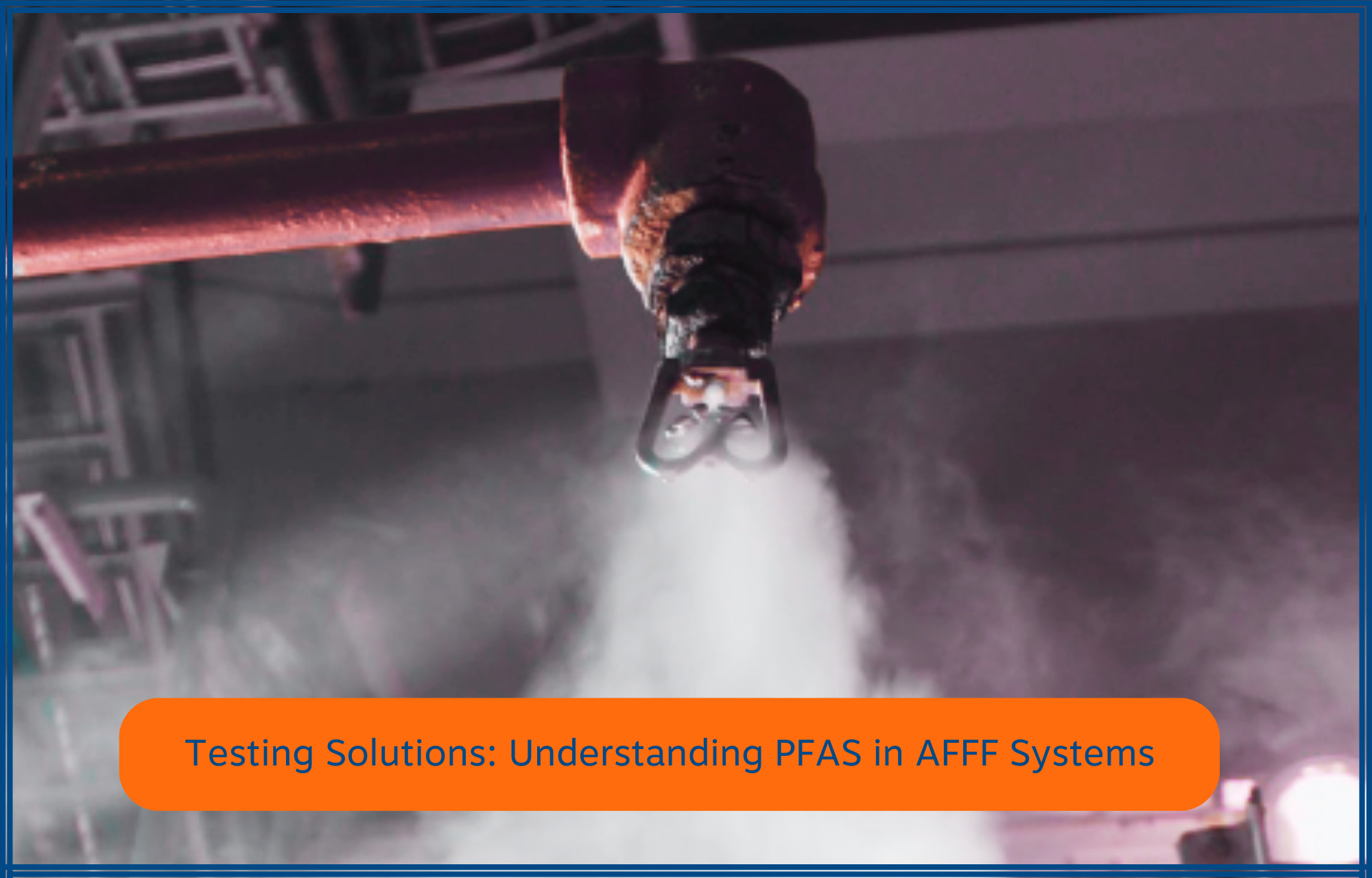Because per- and polyfluoroalkyl substances (PFAS) are used so widely and are present in so many industrial goods, they have become a serious environmental and health hazard. Their existence in Aqueous Film-Forming Foam (AFFF) systems, which are frequently utilized in firefighting operations, is especially concerning. Perfluorooctane sulfonate (PFOS) and perfluorooctanoic acid (PFOA) are two important PFAS constituents that give AFFF foam its fire-suppressive qualities.
However, there are risks to human and environmental health due to their tenacity and ability to build up in the environment. The implications of PFAS in AFFF systems are examined in this article, along with the difficulties in testing, disposing of, and preventing PFAS buildup in piping systems. It also emphasizes how crucial it is to look into PFAS-free alternatives and use cutting-edge testing techniques to reduce the risk of environmental contamination.
PFAS and AFFF Systems
Per- and polyfluoroalkyl substances (PFAS) have received a lot of attention since they are found in a variety of industrial goods and have a negative influence on the environment and human health. One source of worry about PFAS is its usage in Aqueous Film-Forming Foam (AFFF) systems, which are commonly employed in firefighting operations due to their efficacy in suppressing flammable liquid fires. The presence of PFAS in AFFF presents a number of environmental and safety concerns.
Presence of PFAS in AFFF:
AFFF contains PFAS chemicals, including PFOS and PFOA, among others. These compounds give the foam its fire-suppression capabilities, but they are persistent and can accumulate in the environment and living beings, creating possible health problems.
Impact on Deluge Foam Systems:
Due to the presence of PFAS in AFFF, deluge foam systems, which are critical for fighting high-risk fires, may contribute to contamination. When activated, these systems have traditionally produced PFAS-containing foam, possibly contaminating the environment, especially in regions where firefighting training or incidents take place.
Challenges with Conventional Testing Methods:
Conventional testing methods for deluge systems involve discharging water or a foam/water mix over the distribution network, which presents challenges. The emerging worry is the possible accumulation of PFAS in piping systems utilized for AFFF deployment. Over time, PFAS residues can accumulate in pipework, increasing the danger of leakage into water supplies or contamination during foam deployment. Intentionally discharging water or a foam/water combination during normal testing can result in the emission of PFAS chemicals.
Disposal of Water After Testing:
After testing, it’s important to consider how to properly dispose of water and materials. The foam frequently contaminates water with PFAS, making safe disposal difficult. Proper treatment methods are required to prevent further environmental contamination, necessitating the use of specialized facilities designed to handle PFAS-contaminated water.
PFAS Build-Up in Piping:
Concerns about PFAS build-up in AFFF pipe systems are gaining attention. Over time, PFAS residues may accumulate in the pipework, increasing the danger of leakage into water supplies or contamination during foam deployment.
Addressing Challenges:
To reduce the impact of PFAS in AFFF systems, it is critical to investigate PFAS-free alternatives for firefighting foam as well as novel testing methods. Siron USA provides these cutting-edge technologies to help make data-driven decisions and limit the danger of PFAS emissions. It is vital to highlight that when water or foam/water solution discharge is required, measures to restrict, treat, and safely dispose of polluted water are critical to preventing further environmental impact.
Furthermore, regular inspection and repair of piping systems is required to monitor and manage corrosive buildup. This buildup can render a deluge system useless and is where PFAS chemicals typically accumulate. Siron USA performs internal visual inspections of system pipe networks with inspection cameras to ensure the integrity of the firefighting infrastructure.
Conclusion:
Recognizing the presence of PFAS in AFFF systems raises serious concerns about environmental contamination, adequate testing, water disposal, and potential pipe issues. To address these difficulties, companies, regulators, and environmental specialists must work together to reduce the dangers of PFAS contamination from firefighting foams.



